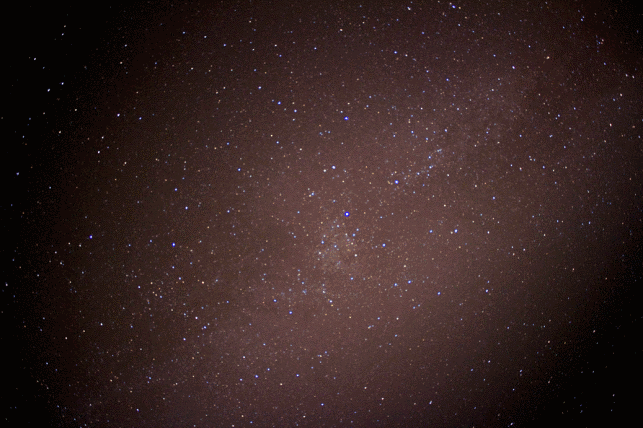Astronomy Tutorial
Naked eye astronomy
What is that - naked eye astronomy? Well... it's a very old science.
There were astronomers way before the telescopes.
People looked at the stars for thousands of years without any
optical aid. And, with a lot of perseverance they got awesome
results. They learned the apparent rotation of the stars, sun, moon
and planets. It was counter intuitive to realize the Earth rotation
so many early astronomers thought that our sky is revolving around
us.
Planets were special objects because they don't follow the same "sky
paths" as normal stars.
Without any optical aid, there are 5 visible planets. They look like
bright stars.
You can simulate the motion of stars and planets in
Sky Map Online by going forward (or
backward) a specific time interval. For example, move forward one
hour at a time. Stars will rise from east and set to the west.
It's really amazing how people actually unlocked a lot of our universe mysteries by just rigorous star and planets observations. They figured out and calculated the planets orbits with accuracy a few hundred years ago - Keppler, Tycho, Copernicus, etc got incredible results (for their time).
It's easy to study the apparent movement of the space objects (sun, moon, planets and stars). It doesn't require any optical aid.Here are some simple quizzes to be solved by "naked eye astronomy":
- Does our sun rises from the same direction every morning or not?
- We know it rises from the east, but does it really rises exactly at the east?
- Can you determine the aproximative trajectory of the sun during the day?
- Does the sun go higher during summer time?
- Do stars rise and set like our sun?
- Are there stars which are visible all day (never rise or set)?
- If you live in northern hemisphere, can you locate Polaris?
- How many constellations do you know?
- Can you see Milky Way from your backyard? What about from a dark site (e.g. from a camping site in mountains)?
All these questions can be answered without the need of
binoculars or telescopes.
Because we don't have the time, interest or right conditions, we may
be even too ignorant about our surroundings (our sky).
Here are a few funny examples:
- During a power outage in a big city, people were finally able to see our Milky Way like a silver cloud... Some of these naive city dwellers were not sure about what is that and called 911 asking if the "silver cloud" caused the power outage.
- Claim that Polaris is the brightest star in the sky. Polaris is indeed an important star for humans from Northern hemisphere, because it helps us to find which way is North. But, even if it's a fairly bright star, it is not the brightest one. Sirius is the brightest star (of course, if you exclude our very own Sun)
- There is an Internet hoax claiming almost every August (since 2003) that Mars is going to be so close to Earth that it can be seen as a small full moon. No matter how much we'll try and how close Mars come on its own orbit to Earth, it's still so far away that we see it a bright star (and not like a disk) without any telescope
What can we see with our naked eyes?
- planets like bright stars (Venus and Jupiter are the brightest night objects after our Moon)
- hundreds of stars (from suburbs)
- recognize some constellations and identify stars by their names
- Milky Way during summer and winter evenings
- Milky Way dark lanes and thousand of stars form a dark location
- Andromeda galaxy - only if you know where to look and at a dark location
- shooting stars (meteoroids), comets, fireballs, artificial satellites
- plane lights and mistake them for satellites :) - usually the plane lights are flashing (red and blue on the tip of the wings), satellites are steady lights moving at constant speed on the sky
Yes, they are! The problem is that our eyes can't really figure out colors at low lights. With some experience, somebody can distinguish a red star (or planet) from a blue or white one.
For example, Mars, Betelgeuse (in Orion), Alderbaran (in Taurus) are red objects. Can you distinguish their color from blue or white stars?
